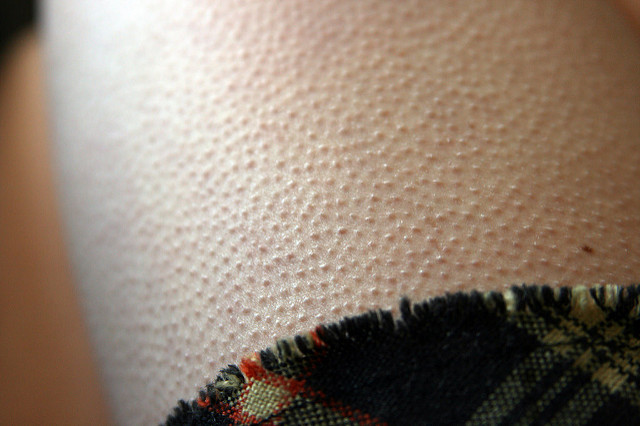Have you ever experienced cutis anserina or horripilation? Don’t worry, these words aren’t any more familiar to me than they probably are to you. The common term for these words is goose bumps, which occur subconsciously when the muscles connected to hair follicles contract and cause the surrounding skin to elevate, thus forming tiny bumps on the skin.
What causes goose bumps to form? Fear, low temperatures, stress, and other extreme emotions or conditions are all causes. For example, during emotional situations, such as attending a wedding or watching a scary movie, people tend to get goose bumps. They can occur not only because of present situations, but also past situations, such as thinking about a child’s birth or a relative’s funeral. Biologically, what makes goose bumps form? The physiological cause of goose bumps is the release of the stress hormone adrenaline, which is produced in the adrenal glands located on top of each kidney. Adrenaline not only causes the contraction of skin muscles, but it also increases heart rate, blood circulation, and muscle strength to combat stressful situations.
Image Source: GK Hart/Vikki Hart
Are there any disorders associated with goose bumps? The answer is yes. Goose bumps are a symptom of autonomic hyperreflexia, which is a condition in which the nervous system overreacts to a stimulus. Spinal cord injury is a common cause of autonomic hyperreflexia, and its symptoms include goose bumps, excessive sweating, and high blood pressure. In most cases, goose bumps are a natural reaction that aren’t a cause for concern.
According to Dr. George Bubenik, a physiologist and zoology professor at the University of Guelph, goose bumps are a stress response that were inherited from our animal ancestors. For animals with fur, goose bumps can serve as a defense mechanism against cold weather and predators. During cold weather conditions, the elevation of hair follicles warms the animal by expanding the layer of air to help prevent heat loss. The experience of goose bumps is also called the pilomotor reflex, which makes animals look bigger. In the case of predators, a cat, for example, will raise its hair to make itself appear larger and scarier. However, goose bumps aren’t as useful to humans, because we lack fur; the only advantage of goose bumps for us is that it raises our mental awareness to possible danger.
So the next time you get goose bumps, keep in mind that your body’s only trying to protect you!
Feature Image Source: The warmth doesn’t last by Quinn Dombrowski










